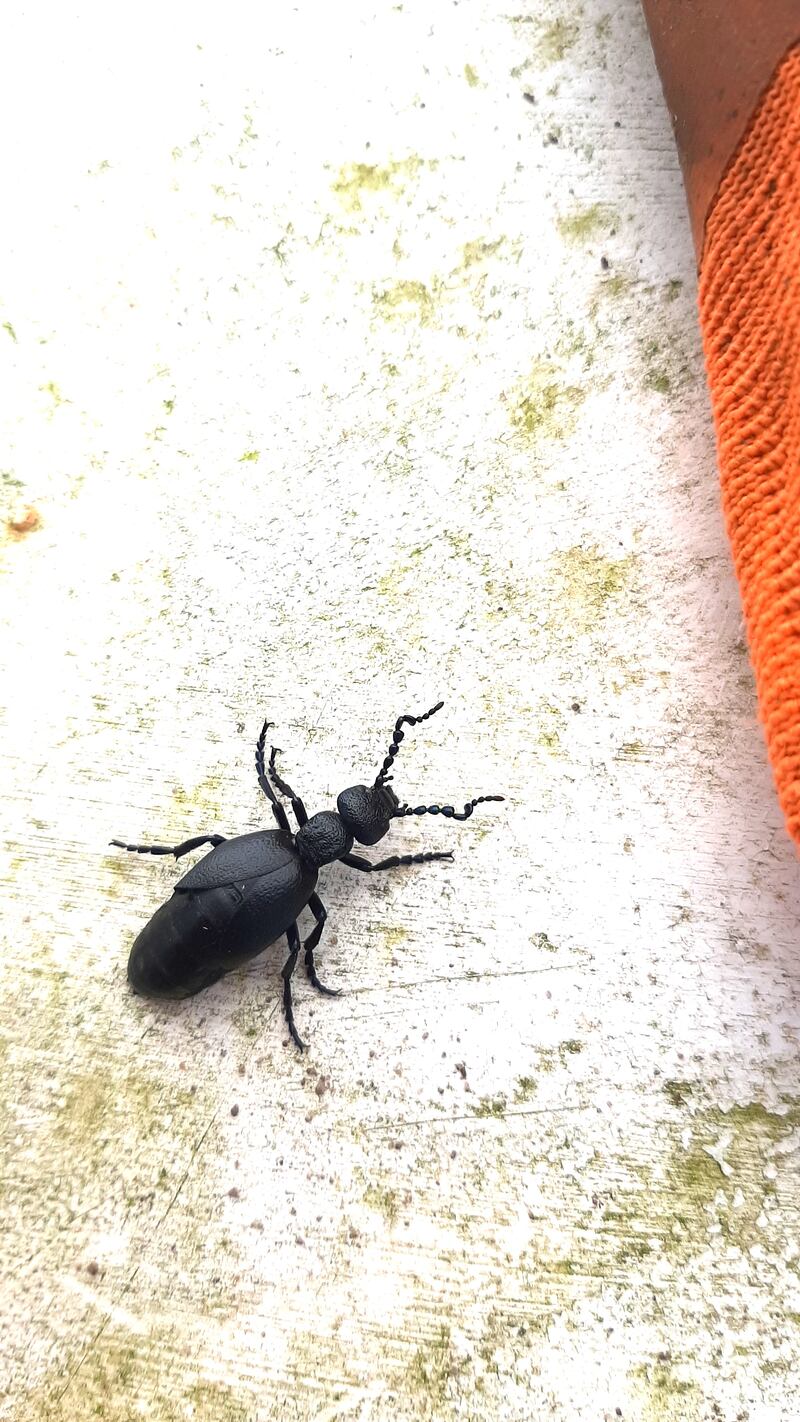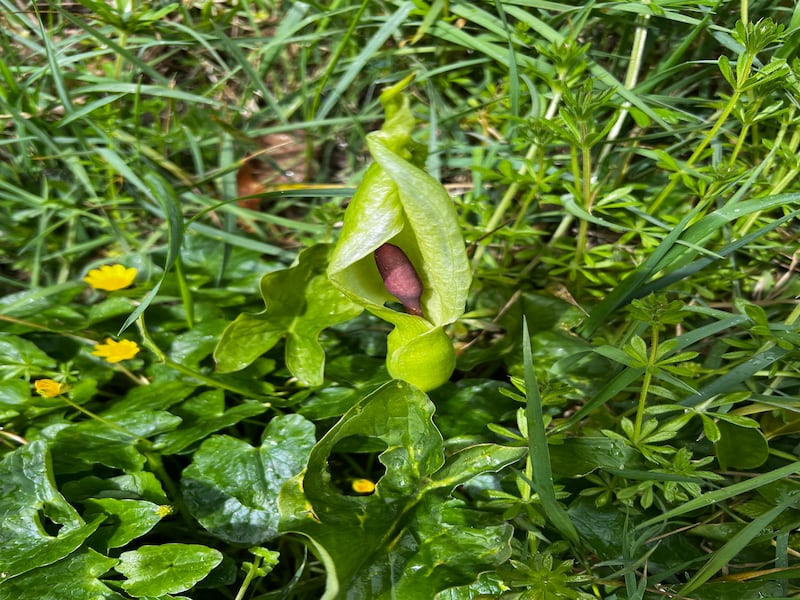I saw this lichen on a living tree recently. It was growing well, confirming the clean air of Connemara. Paul Dunne, Co Galway
This is Flavoparmelia caperata, a large foliose lichen that is sensitive to sulphur dioxide pollution, and so is an indicator of good air quality when it grows abundantly. It favours trees with acidic bark and silica rich rocks, and does no harm at all to the trees on which it grows. Lichens are a symbiotic union of an alga and a fungus. The algal cells, which have chlorophyll present, carry out photosynthesis, while nutrients are transported via the fungal cells. Lichens have no roots, so all their nutrients are absorbed from the air. Thus the sensitivity of some of them to air pollutants.

Walking in the local park, I noticed hundreds of dead worms on top of the path surface. I have never seen so many. Why is this happening? Mary Fleming, Co Dublin
Several readers have noticed this recently. Earthworms absorb oxygen through their skin, so they need moisture-enriched soil with a certain oxygen content to survive. Note moisture-enriched – not fully saturated, waterlogged soil. While worms won’t drown if they are submerged in water for a short time, recent wet conditions during March, when almost twice the average amount of rain fell, has meant that soils were almost continuously waterlogged. Earthworms will surface during heavy rainstorms. It seems they are alerted by the vibrations made by raindrops, behaviour that is exploited by hungry gulls seen dancing on the ground to imitate heavy rain.
READ MORE

This large insect recently crossed my garden path in Wexford. At first I thought it was a welcome rove beetle, but it did not lift its tail when threatened. What can you tell me about my visitor? Ann Doran, Co Wexford
This is the black oil beetle, Meloe proscarabaeus, which has an interesting life cycle. Eggs are laid in cracks or holes in the ground. They hatch into long-legged larvae, called triungulins, which swarm over plants with flowers. Only those that can attach themselves to a visiting solitary bee will survive, which they then do by eating the eggs and grubs in the brood cells of the bee’s nest. After that they change into grubs themselves and feed on the food store there. The adults emerge the following spring and nibble on buttercups and dandelions before mating and laying eggs.

What is this weird-looking plant that is growing in our local wood? Peggy McLeer, Co Louth
This is the arum lily. The purple stalk sticking up in the centre (technically called a spadix) produces a horrible smell like that of rotting meat. This attracts flies, which enter the flower looking for the promised food. They are trapped inside by downward bending hairs and must wait there until a fly dusted with lily pollen arrives and fertilises the female parts. The hairs then relax and the flies escape, all getting a good dusting of pollen on the way out. The plant has several bawdy names in both English and Irish – cuckoo pint being one of the more printable ones.

I found what looks like a dolphin on Killiney beach above the usual high-water mark. Ian Doak, Co Dublin
This is the species of dolphin known as the common dolphin which has a relatively long, narrow beak and a buff patch between the head and the dorsal fin. The bottlenose dolphin, on the other hand, is larger, has a short beak and a bulbous head and no distinct body pattern. Common dolphins feed mainly on small fish and squid and can swim very fast, especially when hunting. They mainly occur off the southwest and west coasts, but are also frequently seen by Irish passengers on ferries crossing the Irish Sea.
Please submit your nature query, observation, or photo with a location, via irishtimes.com/eyeonnature













